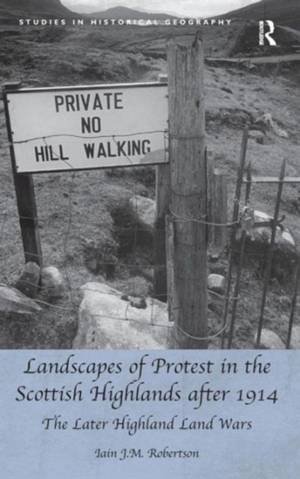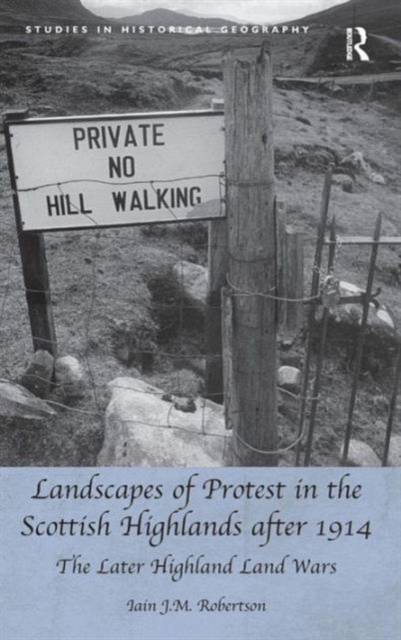
- Retrait gratuit dans votre magasin Club
- 7.000.000 titres dans notre catalogue
- Payer en toute sécurité
- Toujours un magasin près de chez vous
- Retrait gratuit dans votre magasin Club
- 7.000.000 titres dans notre catalogue
- Payer en toute sécurité
- Toujours un magasin près de chez vous
Landscapes of Protest in the Scottish Highlands after 1914
The Later Highland Land Wars
Iain J M Robertson
195,95 €
+ 391 points
Format
Description
In November 1918, the implementation of agrarian change in the Scottish Highlands threatened another wave of unemployment and eviction for the land-working population, which led to widespread and varied social protest. Those who had been away on war service (and their families) faced returning to exactly the same social and economic conditions in the Scottish Highlands they had hoped they had left behind in the struggle to make 'a land fit for heroes'. Widespread and varied social protest rapidly followed. It argues that, previously, there has been a failure to capture fully the geography, chronology typology and rate of occurrence of these events. The book not only offers new insights and a greater understanding of what was happening in the Highlands in this period, but illustrates how a range of forms of protest were used which demand attention, not least for the fact that these events, unlike most of the earlier Land Wars period, were successful. There are functioning townships in the Highlands today that owe their existence to the land invasions of the 1920s. The book innovatively concentrates on formulating explanation and interpretation from within and looks to the crofting landscape as base, means and motive to disturbance and interpretation. It proposes that protest is much more convincingly understood as an expression of environmental ethics from 'the bottom up' coming increasingly into conflict with conservationist views expressed from 'the top down' It focuses on individual case studies in order to engage more convincingly with an important evidential base - that of popular memory of land disturbances - and to adopt a frame and lens through which to explore the fluid and contingent nature of protest performances. Based upon the belief that in the study of landscapes of social protest the old shibboleth of space as solely passive setting and symbolic register is no longer tenable is paid here to nature/culture interactions, to vernacular ecological b
Spécifications
Parties prenantes
- Auteur(s) :
- Editeur:
Contenu
- Nombre de pages :
- 266
- Langue:
- Anglais
- Collection :
Caractéristiques
- EAN:
- 9781472411372
- Date de parution :
- 13-11-13
- Format:
- Livre relié
- Format numérique:
- Genaaid
- Dimensions :
- 156 mm x 234 mm
- Poids :
- 557 g







